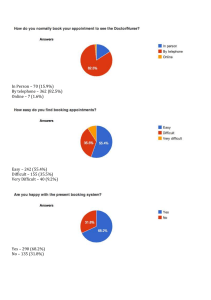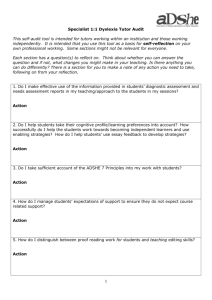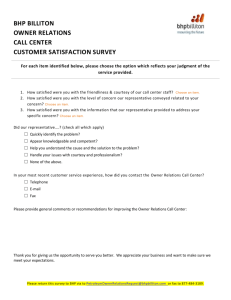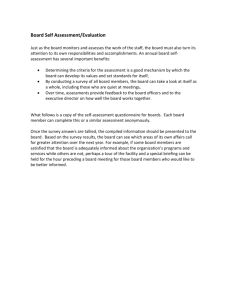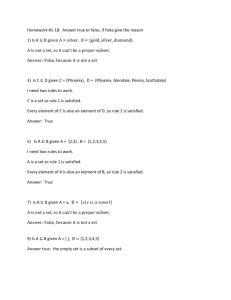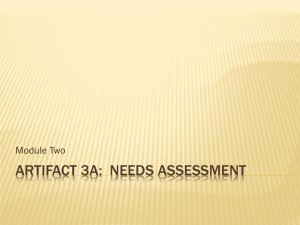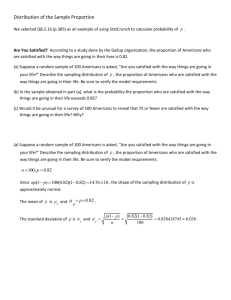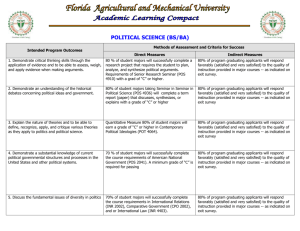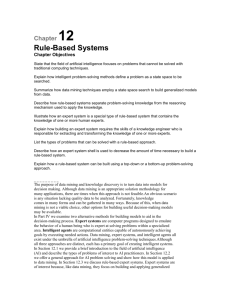Teacher Self-Assessment: Using Vocabulary Strategies
advertisement
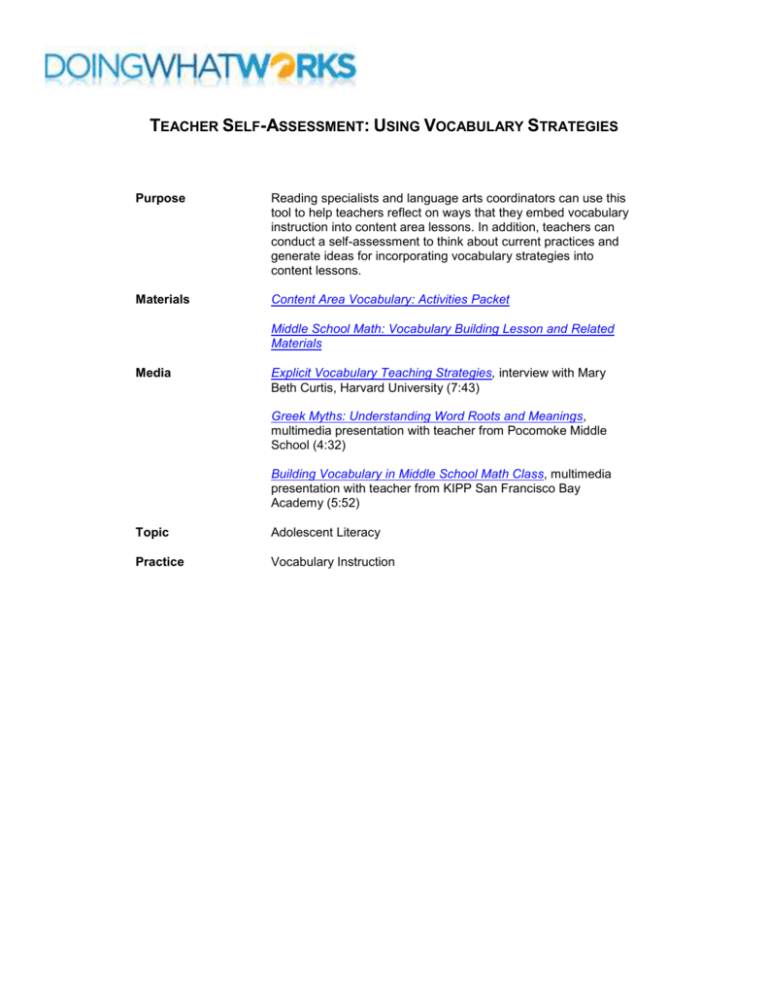
TEACHER SELF-ASSESSMENT: USING VOCABULARY STRATEGIES Purpose Reading specialists and language arts coordinators can use this tool to help teachers reflect on ways that they embed vocabulary instruction into content area lessons. In addition, teachers can conduct a self-assessment to think about current practices and generate ideas for incorporating vocabulary strategies into content lessons. Materials Content Area Vocabulary: Activities Packet Middle School Math: Vocabulary Building Lesson and Related Materials Media Explicit Vocabulary Teaching Strategies, interview with Mary Beth Curtis, Harvard University (7:43) Greek Myths: Understanding Word Roots and Meanings, multimedia presentation with teacher from Pocomoke Middle School (4:32) Building Vocabulary in Middle School Math Class, multimedia presentation with teacher from KIPP San Francisco Bay Academy (5:52) Topic Adolescent Literacy Practice Vocabulary Instruction Teacher Self-Assessment: Using Vocabulary Strategies Teacher Self-Assessment: Using Vocabulary Strategies Teacher reflects on a recently completed content lesson, notes level of satisfaction with vocabulary components and strategies, and suggests ideas for improvement. Embedded Vocabulary Instruction Components Planning lessons 1. Includes vocabulary goals 2. Embeds explicit vocabulary strategies in lesson 3. Allots adequate time to teach vocabulary Selecting words 1. Identifies new words from text 2. Includes relevant words from schoolwide list Using explicit strategies 1. Reviews words learned from previous lessons 2. Introduces and provides clear explanation of new words 3. Builds on students’ prior knowledge Very satisfied Somewhat satisfied Not satisfied Ideas for Improvement Teacher Self-Assessment: Using Vocabulary Strategies Embedded Vocabulary Instruction Components 4. Provides repeated exposure to new words 5. Uses multiple and varied contexts to teach vocabulary Scaffolding Independent Strategies 1. Helps students develop strategies for independent learning 2. Models strategies for defining word meanings (e.g., context cues, word structure, and component analysis) 3. Provides reference materials, such as computer software and textbook glossaries Providing practice opportunities 1. Provides in-class time and opportunities for independent practice of strategies 2. Extends practice through follow up activities, such as computer-based experiences and homework assignments Very satisfied Somewhat satisfied Not satisfied Ideas for Improvement Teacher Self-Assessment: Using Vocabulary Strategies Embedded Vocabulary Instruction Components Very satisfied Somewhat satisfied Not satisfied Ideas for Improvement Assessing learning 1. Encourages multiple ways for students to show understanding 2. Monitors student learning through frequent checks throughout lesson 3. Conducts formal assessment to document student understanding This project has been funded at least in part with Federal funds from the U.S. Department of Education under contract number ED-PEP-11-C-0068. The content of this publication does not necessarily reflect the views or policies of the U.S. Department of Education nor does mention of trade names, commercial products, or organizations imply endorsement by the U.S. Government.
